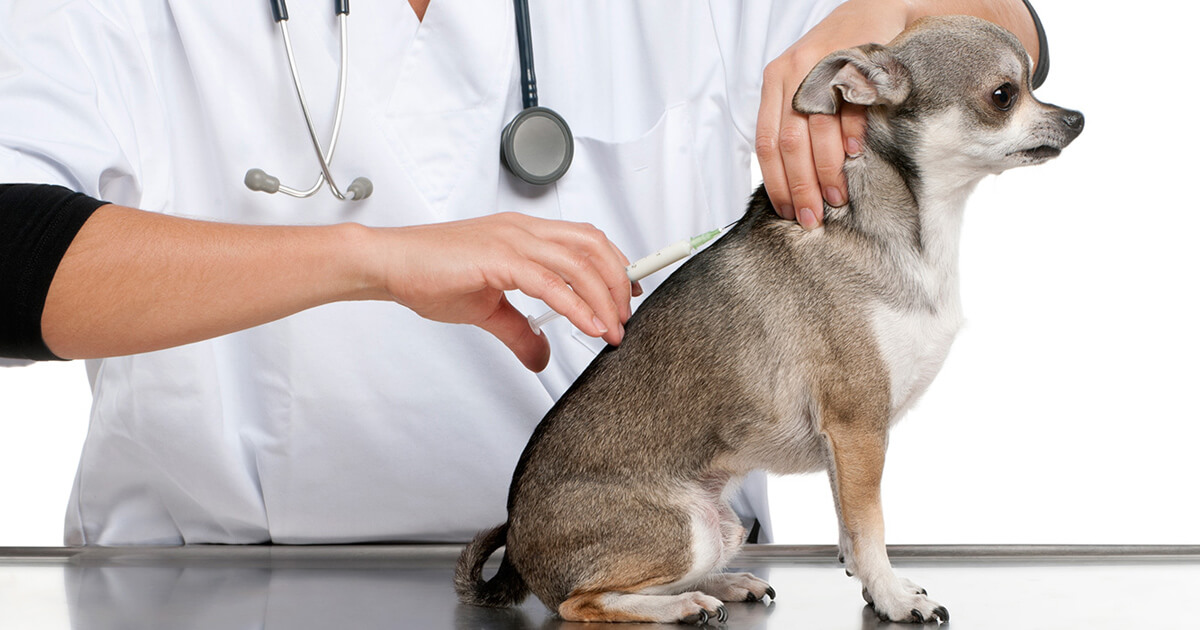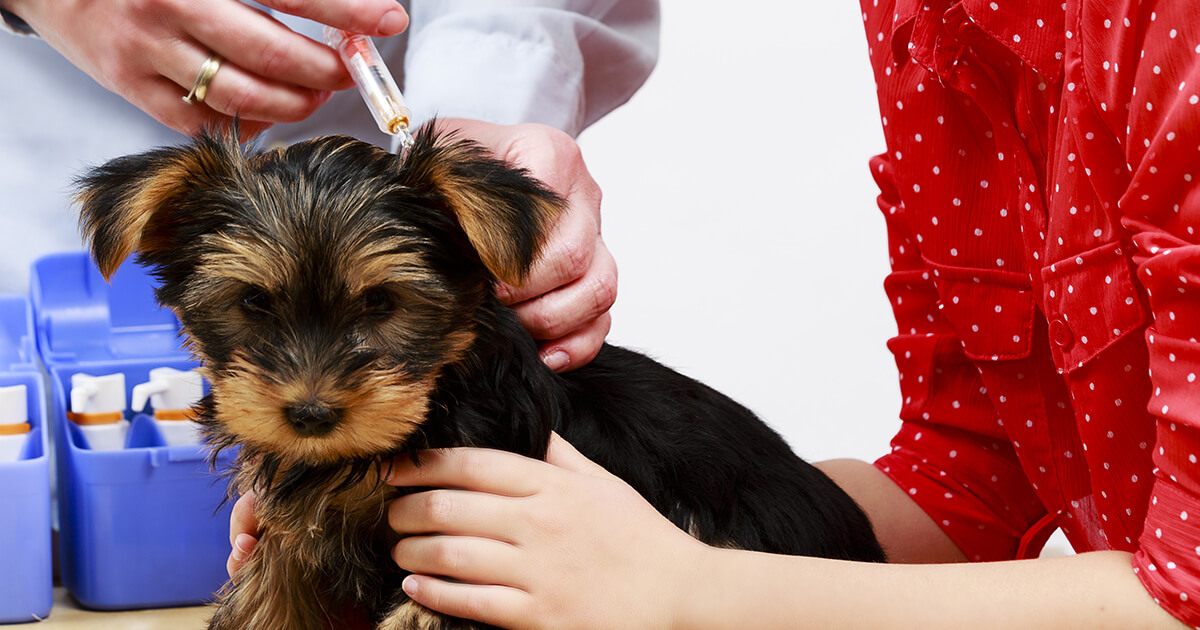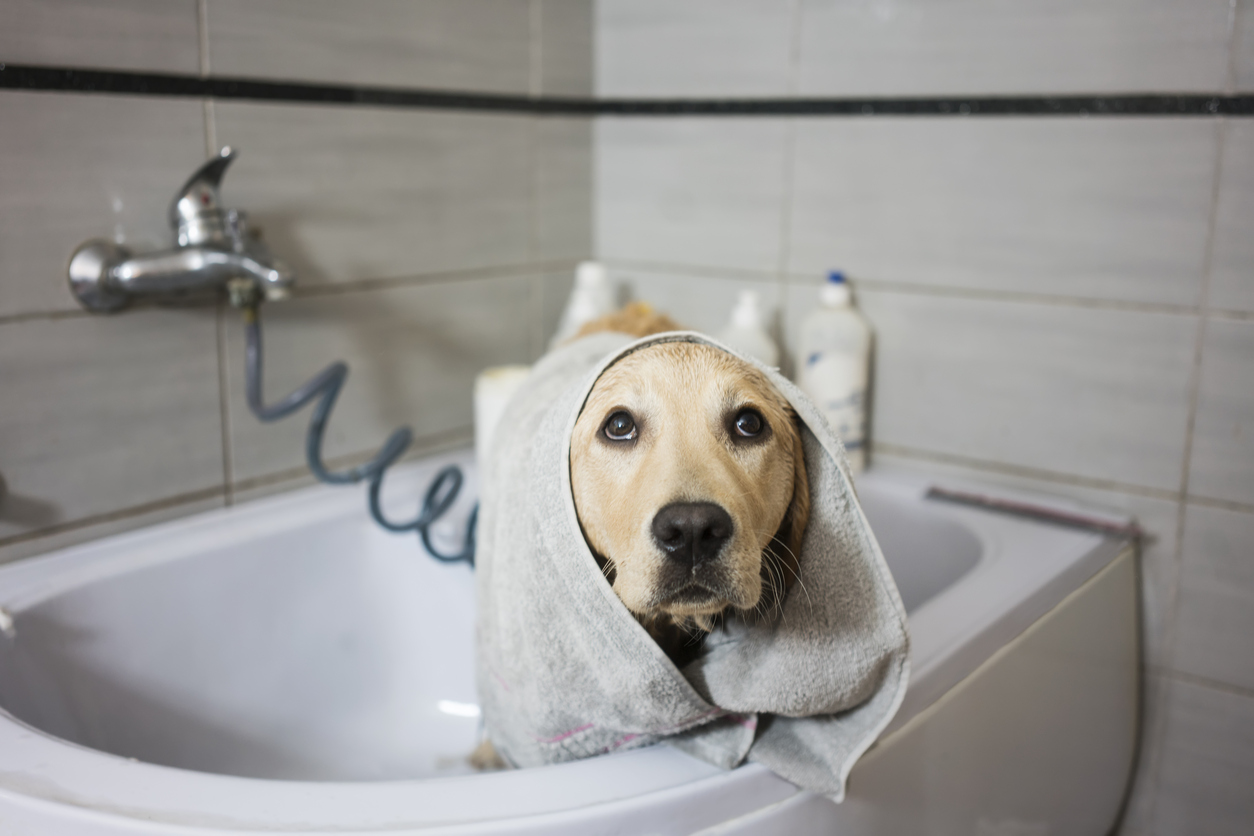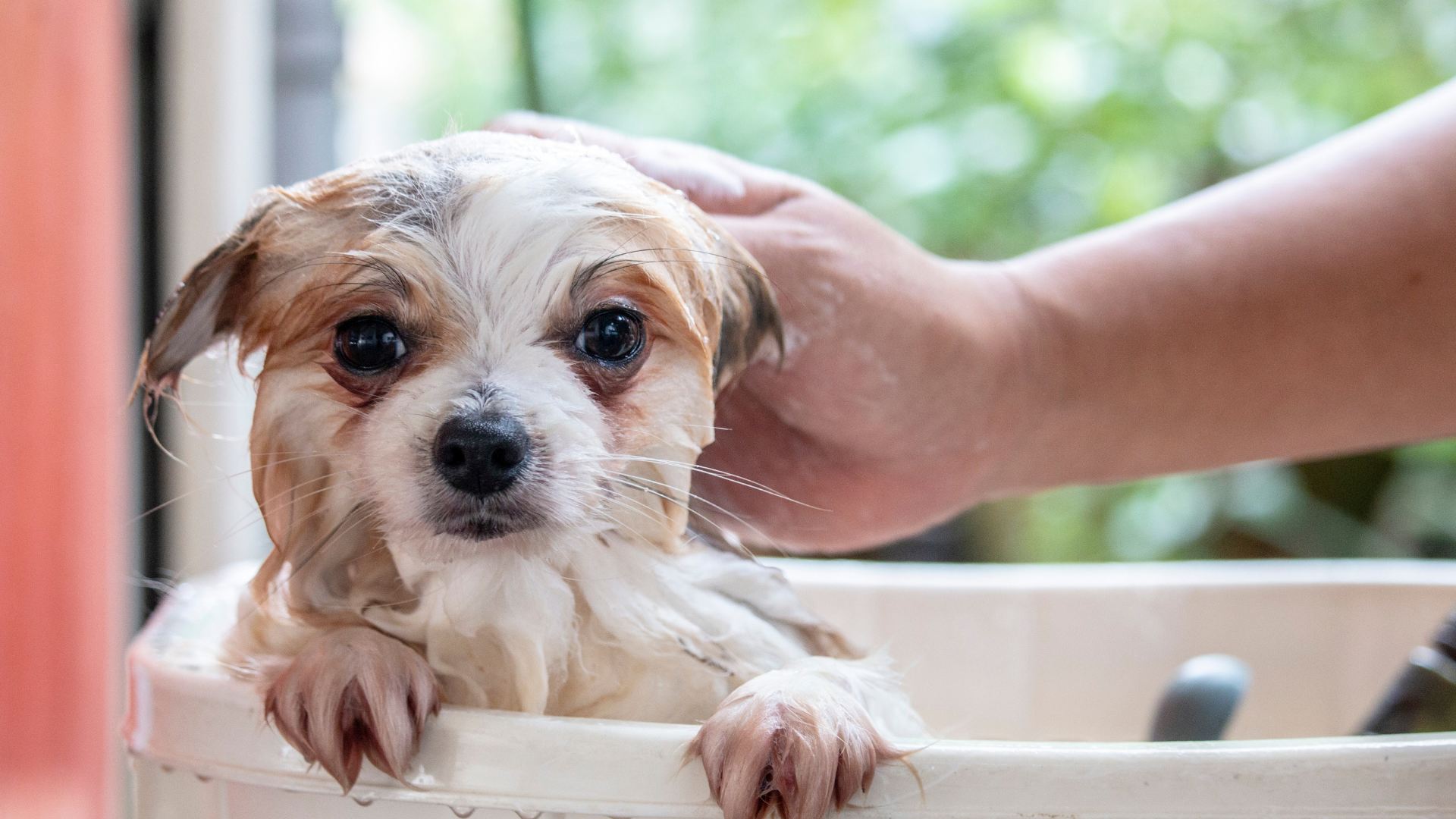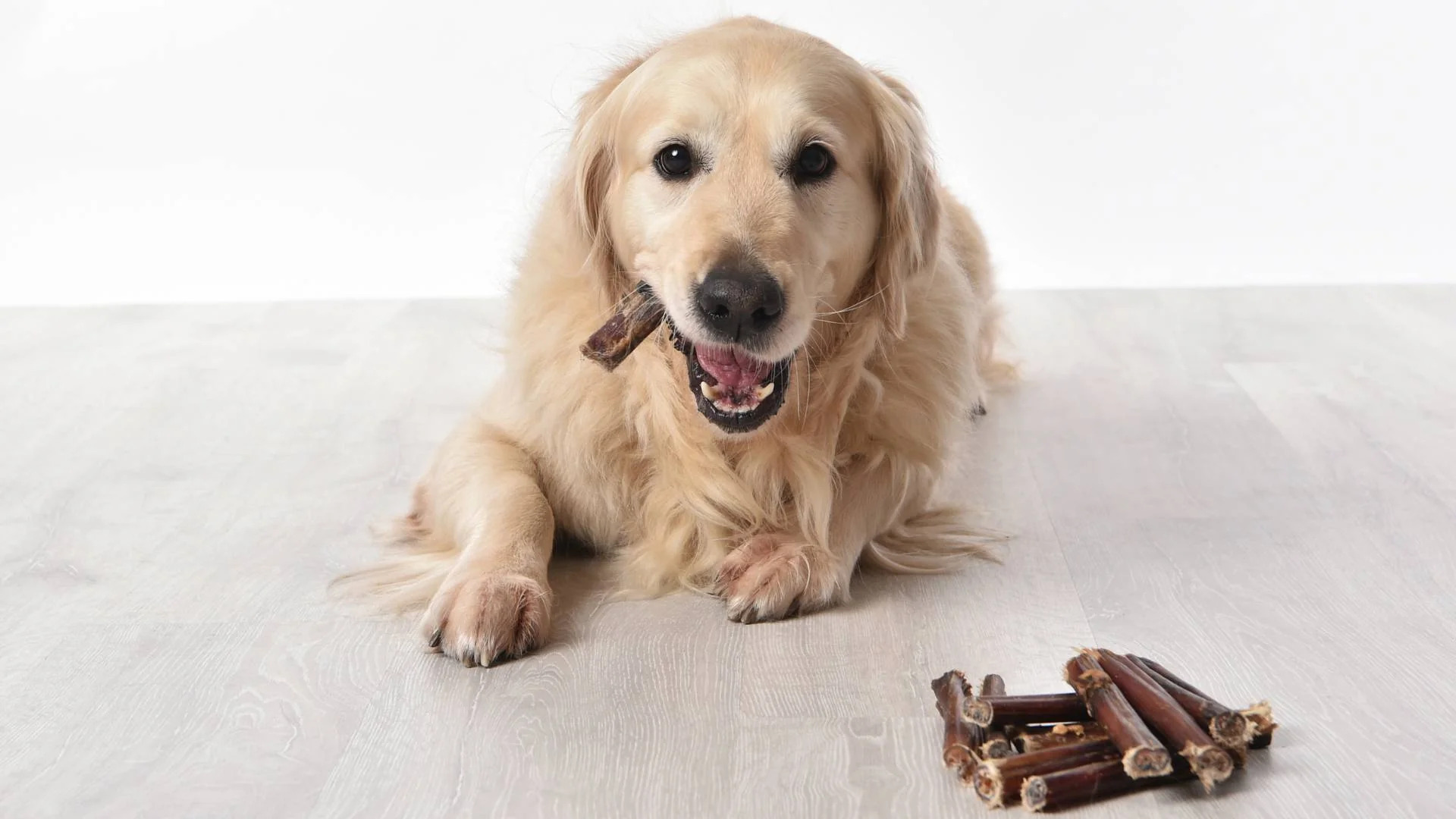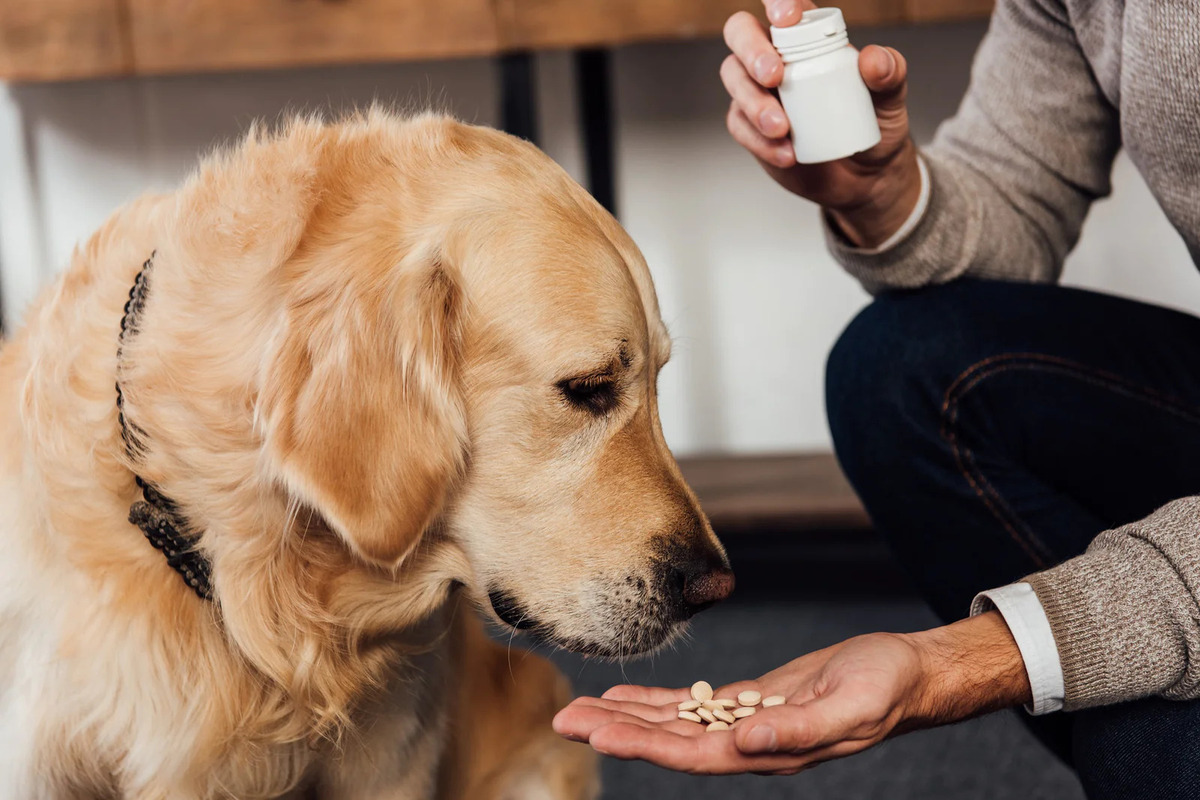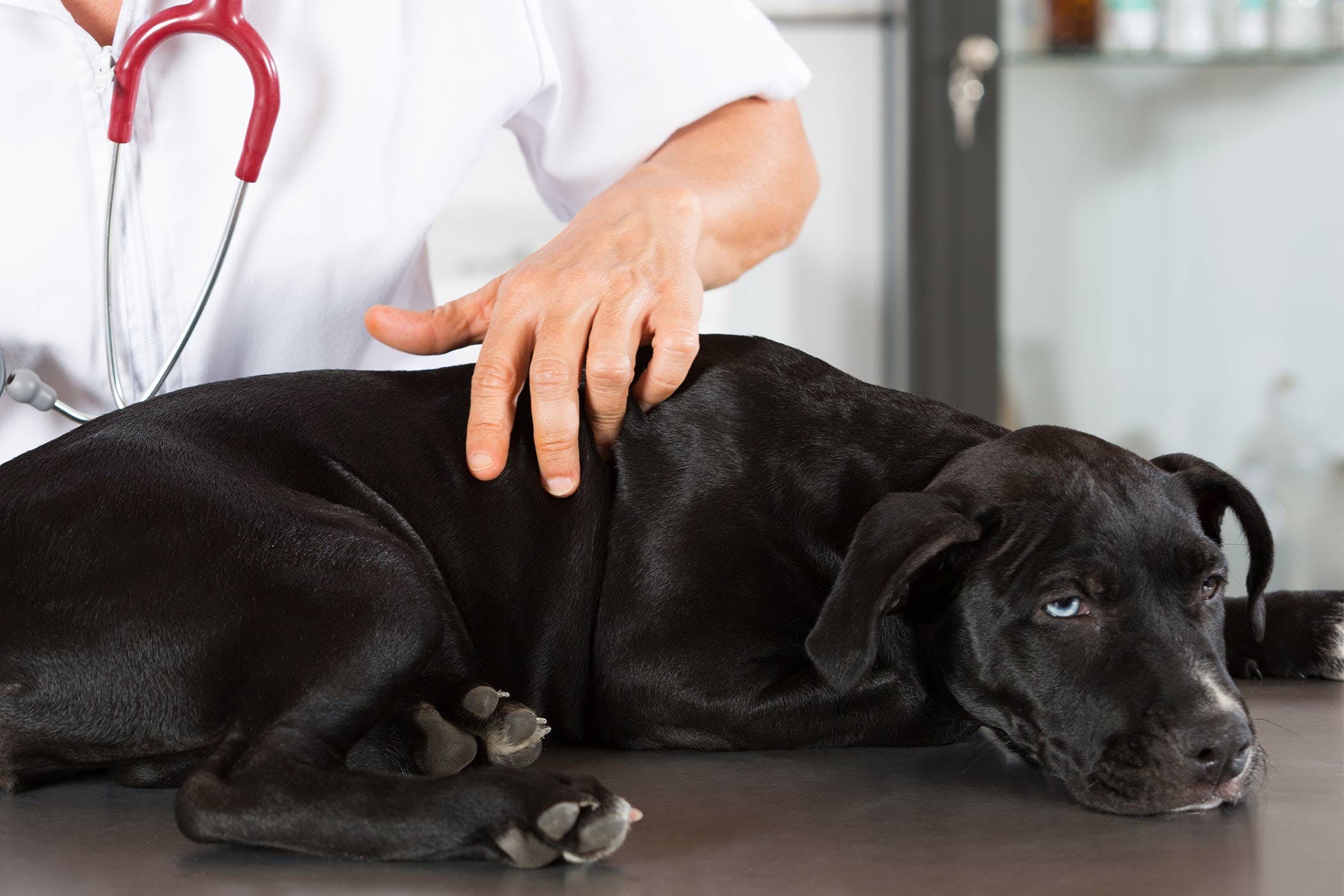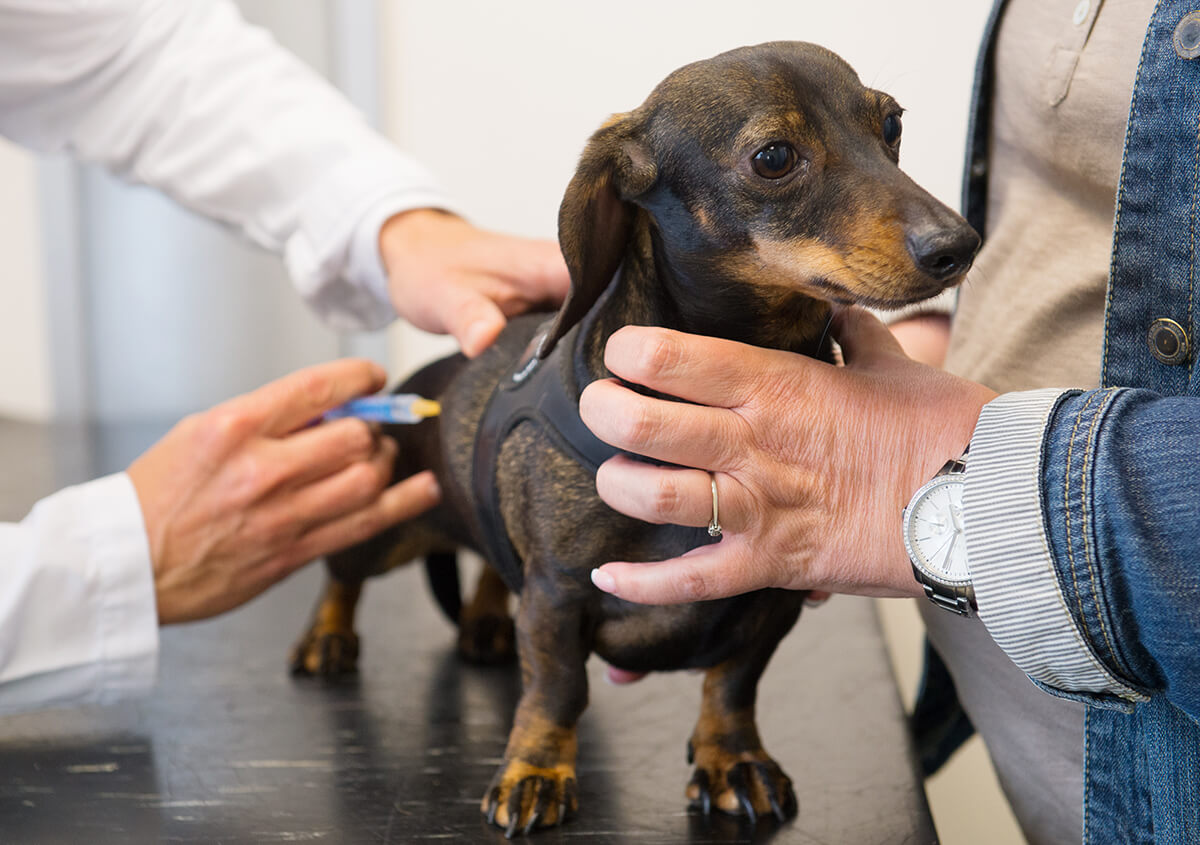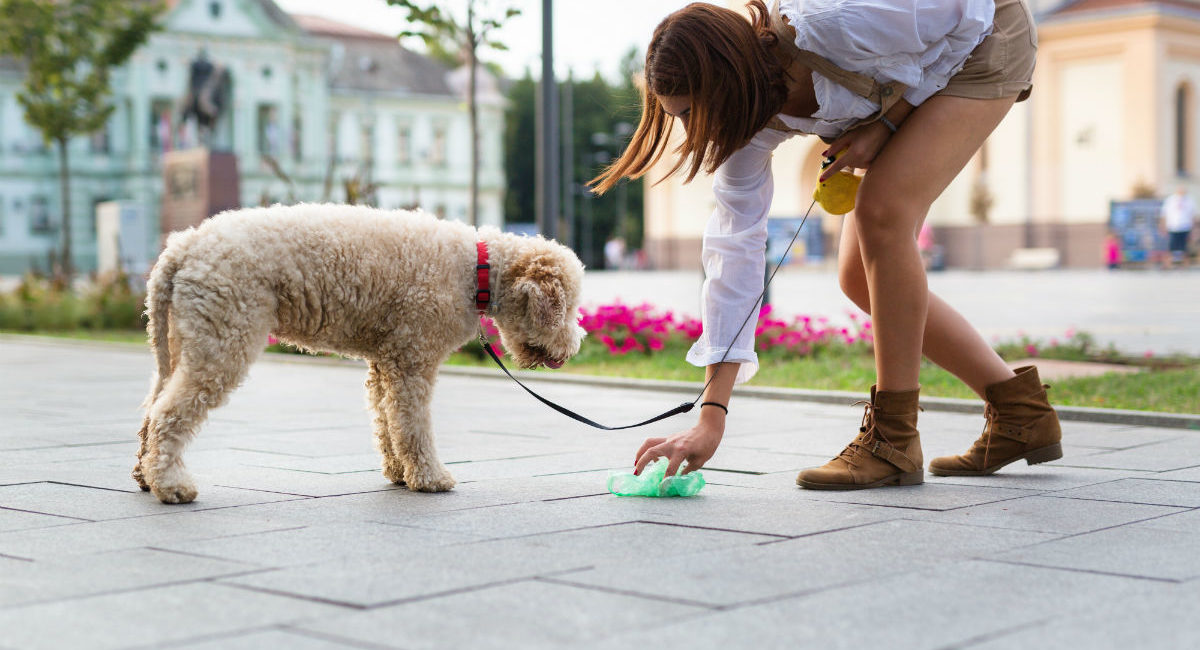Home>Health & Wellness>Common Health Issues>How Often To Bathe A Dog With Fleas
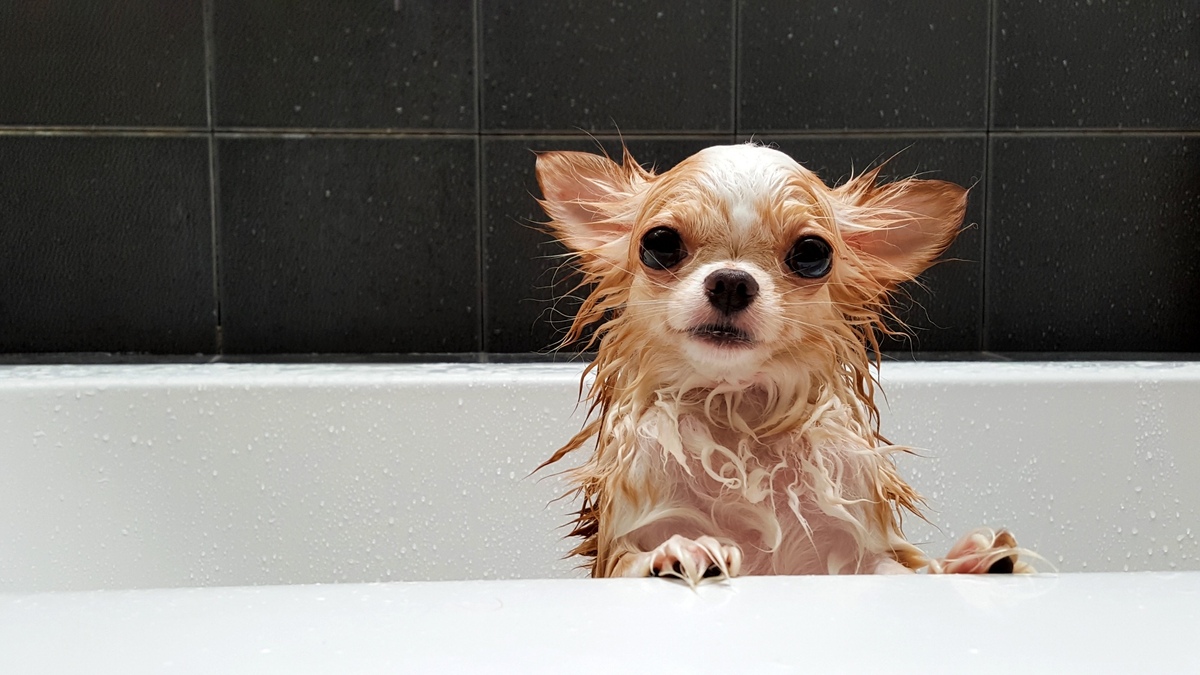

Common Health Issues
How Often To Bathe A Dog With Fleas
Modified: February 21, 2024
Learn how often to bathe a dog with fleas and other common health issues. Discover effective flea treatment and grooming tips for your furry friend.
(Many of the links in this article redirect to a specific reviewed product. Your purchase of these products through affiliate links helps to generate commission for Pawsomeoldies.com, at no extra cost. Learn more)
Table of Contents
Introduction
Dealing with a dog suffering from fleas can be a challenging and distressing experience for both the pet and its owner. Fleas are not only a nuisance but can also lead to various health issues for dogs, including skin irritation, allergic reactions, and even anemia in severe cases. As a responsible pet owner, it's crucial to address this issue promptly and effectively.
Bathing a dog with fleas is a fundamental part of flea control and management. Not only does it help to remove adult fleas from the dog's coat, but it also provides immediate relief from itching and discomfort. However, it's essential to approach this task with the right knowledge and techniques to ensure the best outcome for your furry friend.
In this article, we will delve into the intricacies of bathing a dog with fleas, including the frequency of baths, the impact of fleas on dogs, and valuable tips to make the bathing process more effective and less stressful for both you and your canine companion. By understanding the nuances of flea control and bathing practices, you can take proactive measures to safeguard your dog's well-being and maintain a harmonious living environment for your entire household.
Read more: How To Bathe A Senior Dog
Understanding Fleas and Their Impact on Dogs
Fleas are tiny, wingless parasites that thrive by feeding on the blood of mammals, including dogs. These pesky insects not only cause discomfort but also pose significant health risks to our canine companions. Understanding the impact of fleas on dogs is crucial for effective flea control and management.
Physical Discomfort
When fleas infest a dog, they cause intense itching and irritation. Dogs may scratch, bite, or lick their skin excessively in response to the discomfort caused by flea bites. This can lead to hair loss, inflamed skin, and the formation of hot spots, which are painful, moist dermatitis patches.
Allergic Reactions
Some dogs are allergic to flea saliva, and even a single flea bite can trigger an allergic reaction known as flea allergy dermatitis (FAD). Symptoms of FAD include severe itching, redness, and skin inflammation. If left untreated, FAD can lead to secondary skin infections, exacerbating the dog's discomfort.
Anemia
In severe infestations, particularly in young or small dogs, fleas can cause anemia due to the loss of blood. Anemic dogs may exhibit symptoms such as pale gums, weakness, lethargy, and reduced appetite. Prolonged anemia can have serious health implications and may require veterinary intervention.
Disease Transmission
Fleas can transmit various diseases and parasites to dogs, including tapeworms and Bartonella bacteria, which causes a condition known as bartonellosis. Additionally, flea-borne typhus, although rare, is a potentially serious disease that can affect both dogs and humans.
Environmental Impact
Fleas are prolific reproducers, and their presence can quickly escalate into a full-blown infestation within the home environment. This not only affects the dog but also poses a nuisance to the entire household, requiring comprehensive flea control measures to eradicate the infestation.
By comprehending the detrimental effects of fleas on dogs, pet owners can recognize the urgency of addressing flea infestations and implementing proactive measures to protect their beloved pets from the physical discomfort and health risks associated with these persistent parasites.
Frequency of Bathing a Dog with Fleas
Determining the frequency of bathing a dog with fleas is a crucial aspect of flea control and management. While regular bathing is an essential part of flea treatment, it's important to strike a balance to avoid over-bathing, which can strip the dog's skin of its natural oils and lead to dryness and irritation. The optimal frequency of bathing a dog with fleas depends on several factors, including the severity of the infestation, the dog's skin condition, and the type of flea treatment being used.
Mild to Moderate Infestations
For dogs with mild to moderate flea infestations, bathing once every two weeks is generally sufficient. This frequency helps to eliminate adult fleas and their eggs while minimizing the risk of skin irritation from excessive bathing. Using a gentle, flea-specific shampoo during each bath can effectively remove fleas and soothe the dog's skin, providing relief from itching and discomfort.
Severe Infestations
In cases of severe flea infestations, more frequent bathing may be necessary to provide immediate relief for the dog. However, it's essential to consult a veterinarian to determine the most appropriate bathing schedule based on the dog's specific condition. Additionally, integrating other flea control measures, such as oral or topical flea treatments, environmental flea control, and regular grooming, is crucial for comprehensive flea management.
Skin Sensitivity
Some dogs may have sensitive skin that is prone to dryness and irritation. In such cases, bathing frequency should be adjusted to prevent exacerbating skin issues. Using a moisturizing or oatmeal-based flea shampoo can help maintain skin hydration and minimize potential irritation, allowing for more frequent baths if required.
Ongoing Prevention
After successfully eliminating fleas, implementing a regular bathing schedule as part of a proactive flea prevention strategy is advisable. This helps to maintain the dog's hygiene and monitor for any signs of flea reinfestation. Additionally, incorporating preventive flea treatments, such as monthly topical or oral flea preventatives recommended by a veterinarian, is essential for long-term flea control.
By understanding the optimal frequency of bathing a dog with fleas and tailoring the approach to the dog's specific needs, pet owners can effectively manage flea infestations while promoting their dog's skin health and overall well-being. Regular observation of the dog's skin condition and behavior can guide adjustments to the bathing schedule, ensuring a proactive and tailored approach to flea control.
Tips for Bathing a Dog with Fleas
When it comes to bathing a dog with fleas, employing the right techniques and strategies can significantly enhance the effectiveness of flea treatment while ensuring a stress-free experience for both the dog and the owner. Here are valuable tips to consider when bathing a dog with fleas:
-
Preparation is Key: Before initiating the bath, it's essential to gather all the necessary supplies, including a gentle flea-specific shampoo, a non-slip mat for the bathing area, towels, and a brush or comb for post-bath grooming. Ensuring a calm and controlled environment can help alleviate the dog's anxiety and facilitate a smoother bathing process.
-
Pre-Bath Grooming: Prior to the bath, gently combing or brushing the dog's coat can help remove loose fur, debris, and adult fleas. This preliminary grooming step not only aids in flea removal but also prevents the tangling of fur during the bath, making the process more manageable.
-
Water Temperature and Depth: Using lukewarm water is crucial for the dog's comfort and skin health. The water should be deep enough to cover the dog's body but not so deep as to cause distress. Ensuring a comfortable water temperature and depth can promote a more relaxed bathing experience for the dog.
-
Thorough Application of Shampoo: When applying the flea-specific shampoo, it's important to work up a good lather and ensure thorough coverage of the dog's entire body, including the neck, chest, belly, and legs. Massaging the shampoo into the coat helps to dislodge fleas and their eggs while soothing the dog's skin.
-
Mindful Rinsing: After allowing the shampoo to sit for the recommended duration, thorough rinsing is essential to remove all traces of shampoo from the dog's coat. Residual shampoo can cause skin irritation, so taking the time to rinse the dog's fur completely is crucial for preventing post-bath discomfort.
-
Post-Bath Drying and Grooming: Using absorbent towels, gently pat the dog's coat to remove excess water. It's important to avoid vigorous rubbing, which can lead to tangling and potential skin irritation. Following the initial drying, allowing the dog to air dry or using a blow dryer on a low, cool setting can complete the drying process.
-
Environmental Considerations: After the bath, thoroughly cleaning the bathing area and washing any bedding or fabrics the dog has come into contact with is essential for preventing reinfestation. Additionally, implementing environmental flea control measures in the home environment is crucial for comprehensive flea management.
By incorporating these tips into the bathing routine, pet owners can optimize the effectiveness of flea treatment while promoting a positive bathing experience for their canine companions. Consistency, patience, and attentiveness to the dog's comfort are key elements in ensuring successful flea control through regular bathing.
Read more: How Often Do You Treat Your Dog For Fleas?
Conclusion
In conclusion, bathing a dog with fleas is a fundamental aspect of flea control and management, playing a pivotal role in alleviating the physical discomfort and health risks associated with flea infestations. By understanding the impact of fleas on dogs and the optimal frequency of bathing, pet owners can take proactive measures to safeguard their canine companions' well-being and maintain a harmonious living environment.
Fleas, beyond being a nuisance, can cause significant physical discomfort for dogs, leading to itching, skin irritation, and allergic reactions. In severe cases, fleas can even contribute to anemia and transmit diseases, underscoring the urgency of addressing flea infestations promptly and effectively.
Determining the frequency of bathing a dog with fleas is essential for tailoring the approach to the dog's specific needs. While dogs with mild to moderate infestations may benefit from bathing once every two weeks, those with severe infestations or sensitive skin may require a different bathing schedule. Ongoing prevention through regular bathing and the integration of preventive flea treatments is crucial for long-term flea control.
When bathing a dog with fleas, preparation, pre-bath grooming, mindful water temperature, thorough shampoo application, and post-bath drying and grooming are key considerations. Additionally, environmental cleanliness and flea control measures play a vital role in preventing reinfestation and maintaining a flea-free environment for both the dog and the household.
By incorporating these insights and tips into the bathing routine, pet owners can optimize the effectiveness of flea treatment while promoting a positive bathing experience for their canine companions. Consistency, patience, and attentiveness to the dog's comfort are essential elements in ensuring successful flea control through regular bathing.
In essence, bathing a dog with fleas is not only a practical necessity but also a compassionate gesture toward our loyal companions. By prioritizing their well-being and taking proactive measures to address flea infestations, pet owners can cultivate a healthy and comfortable environment for their dogs, fostering a strong bond built on care and attentiveness.
